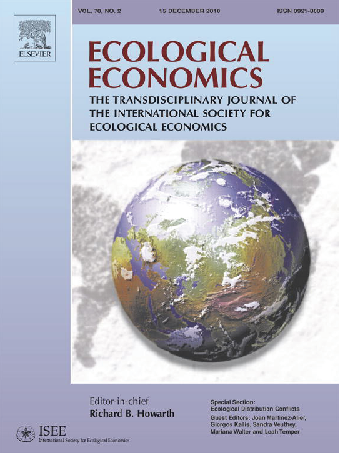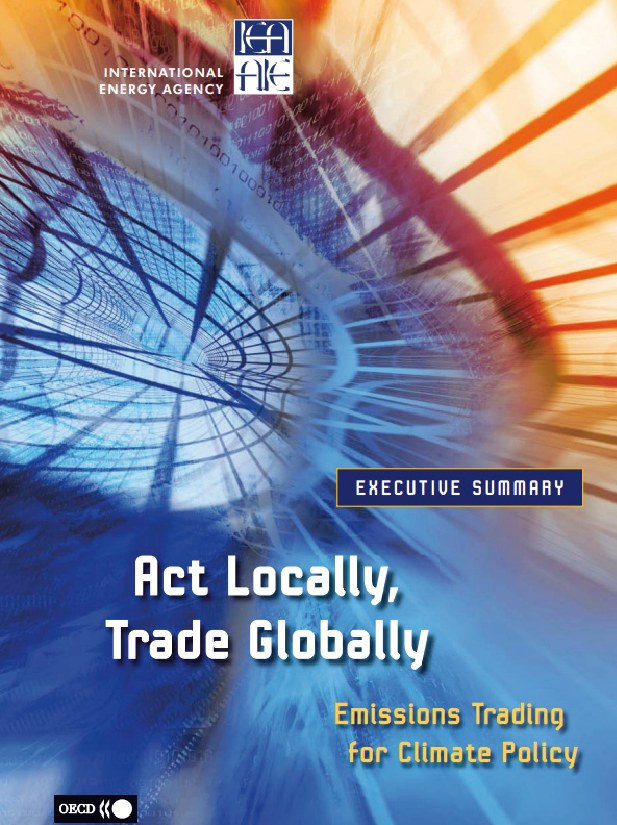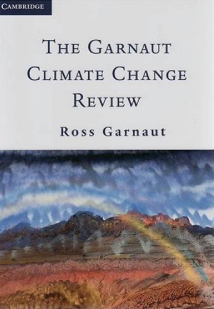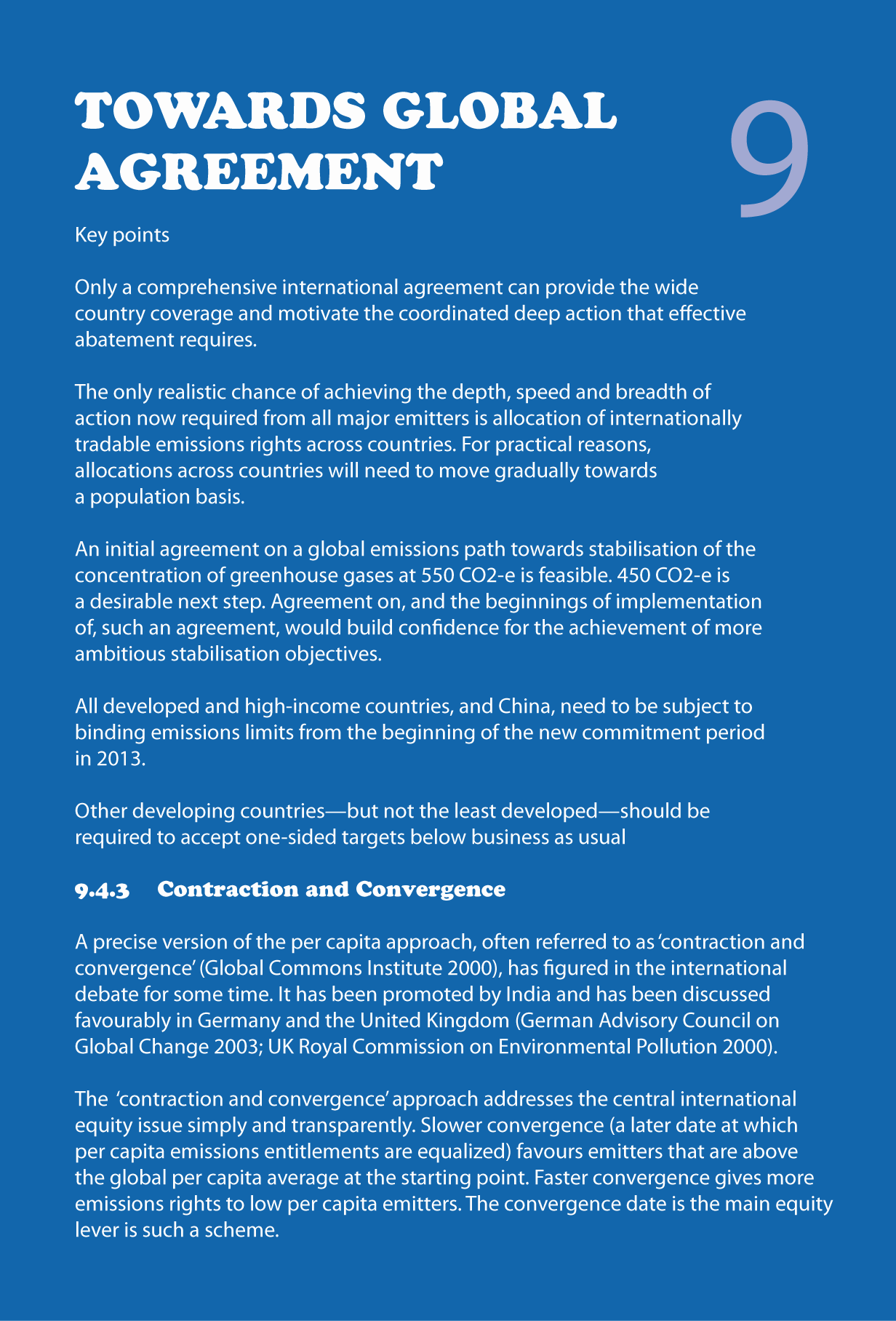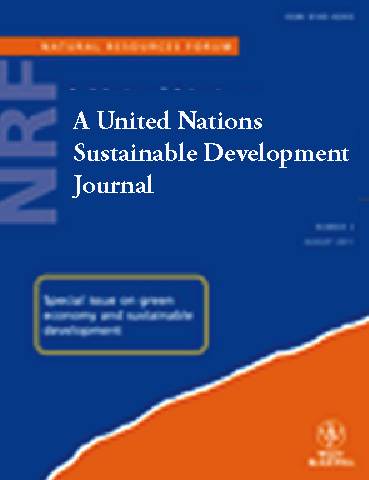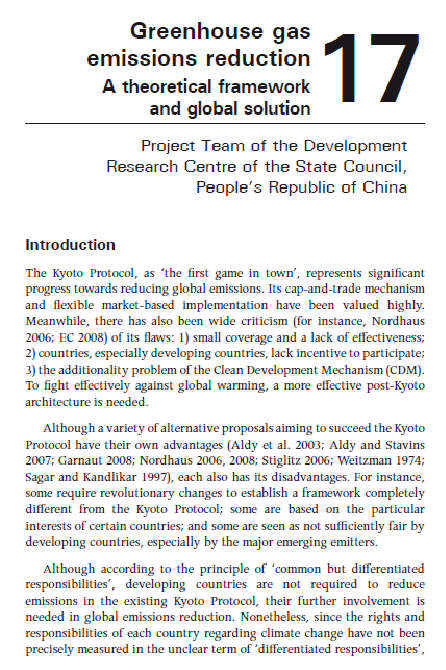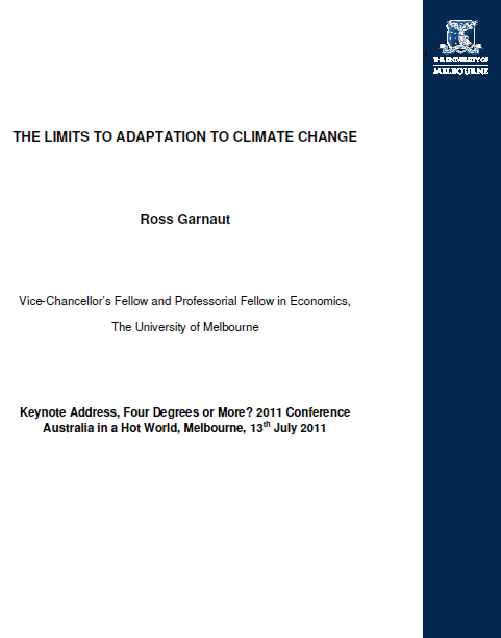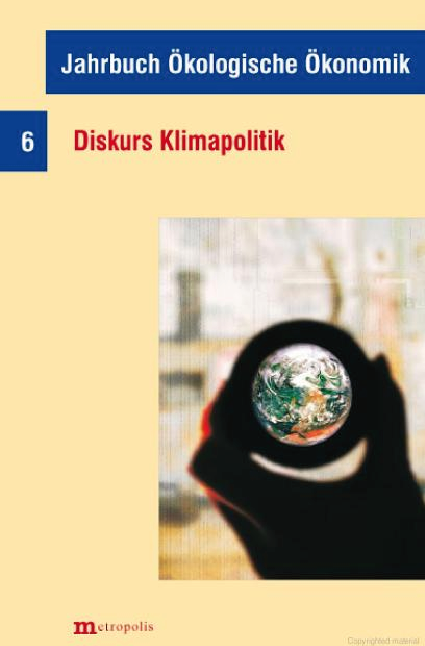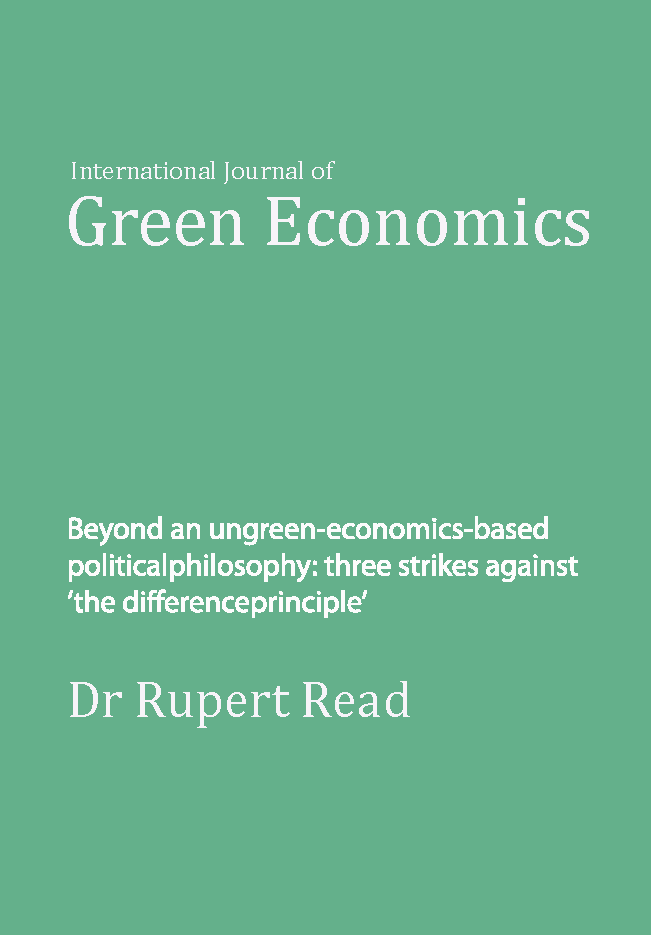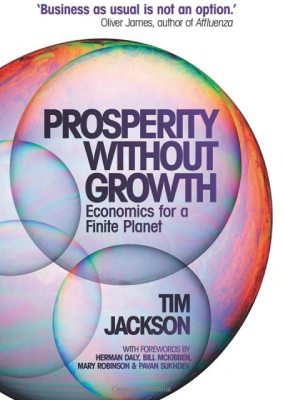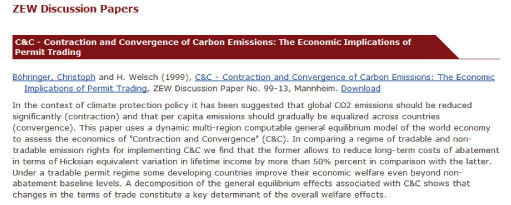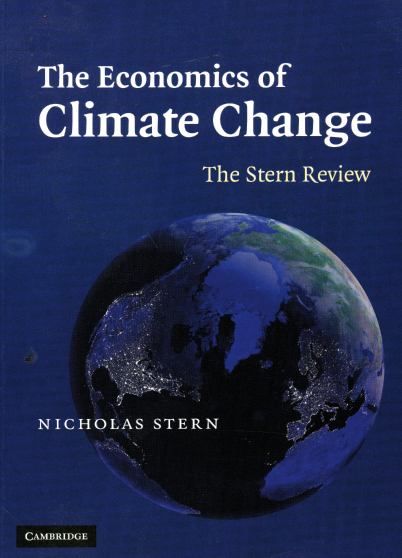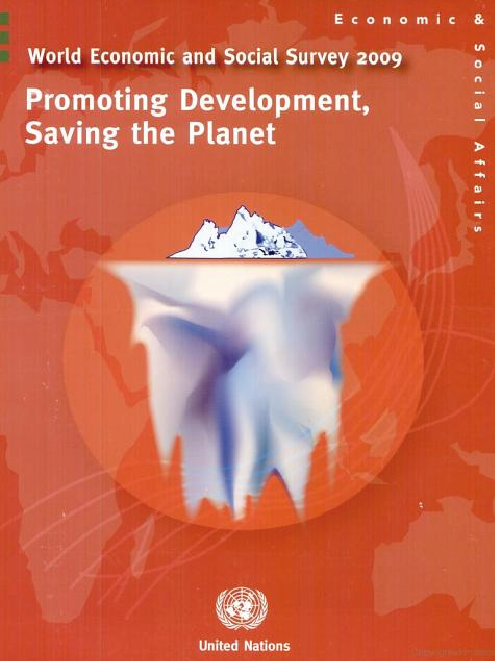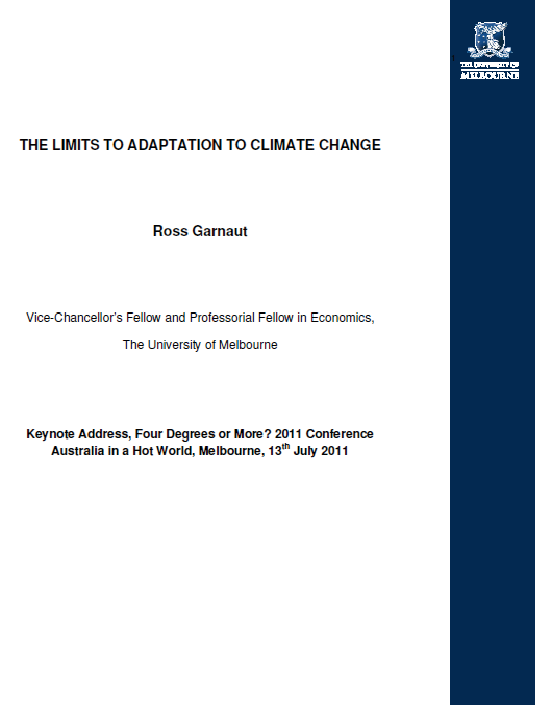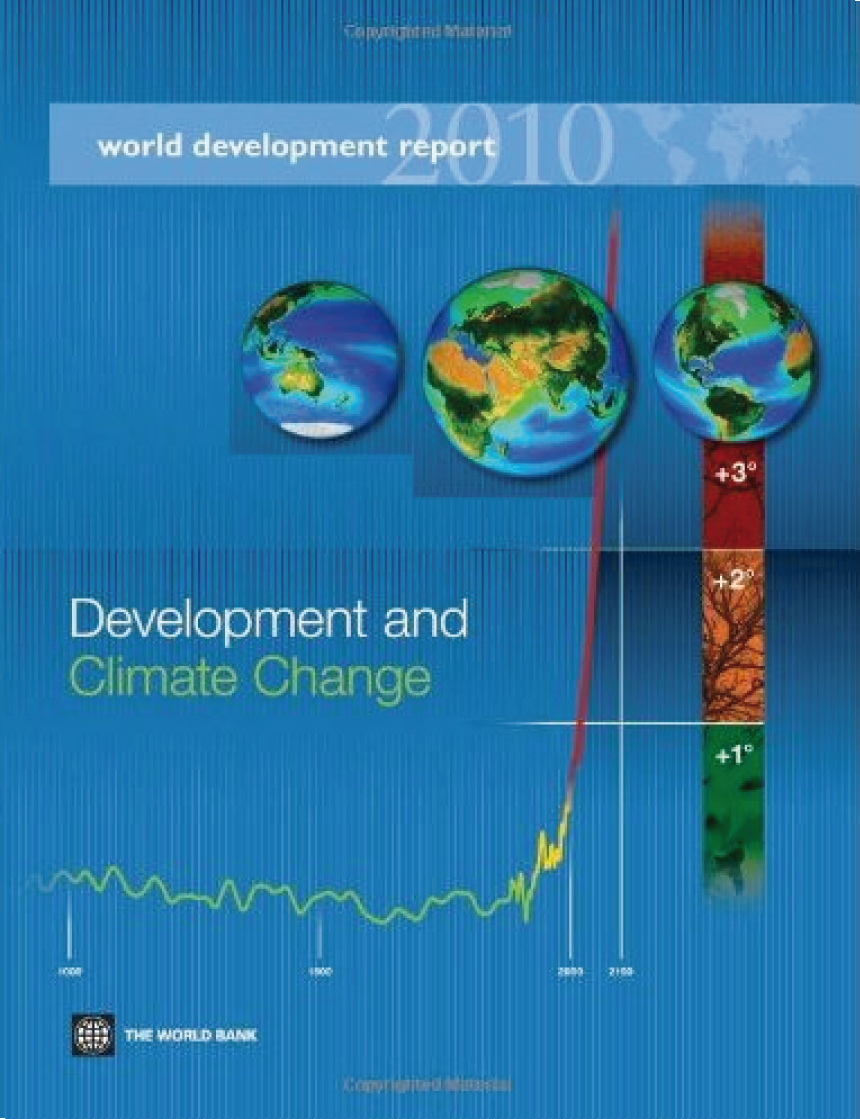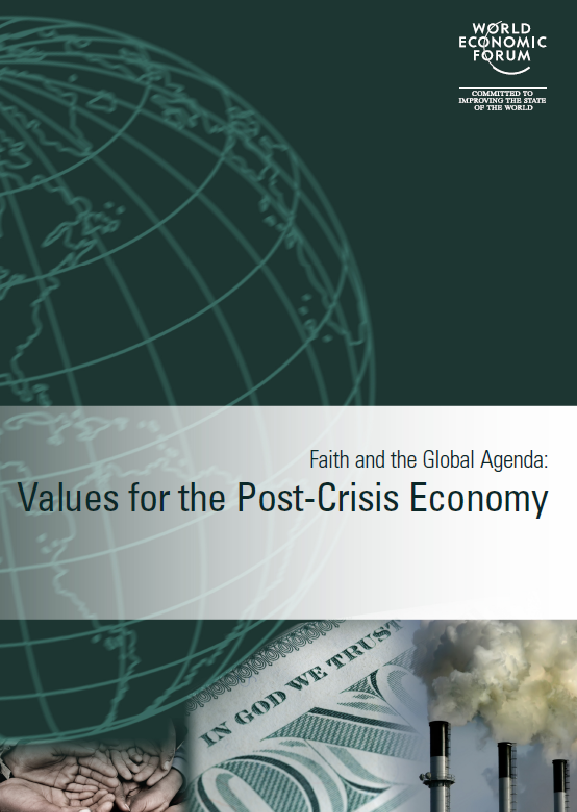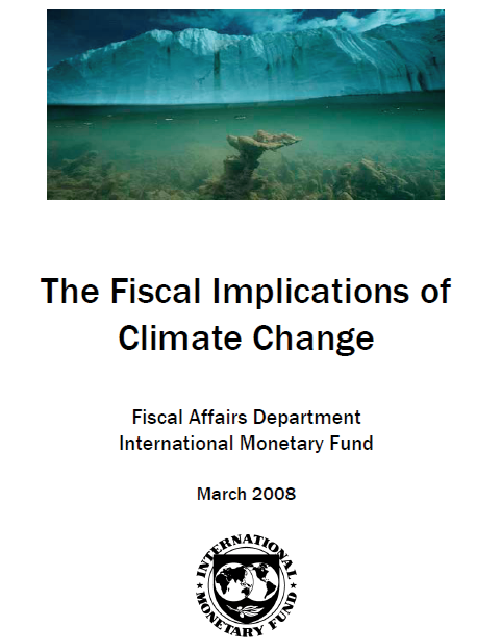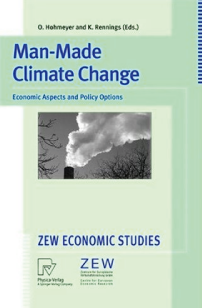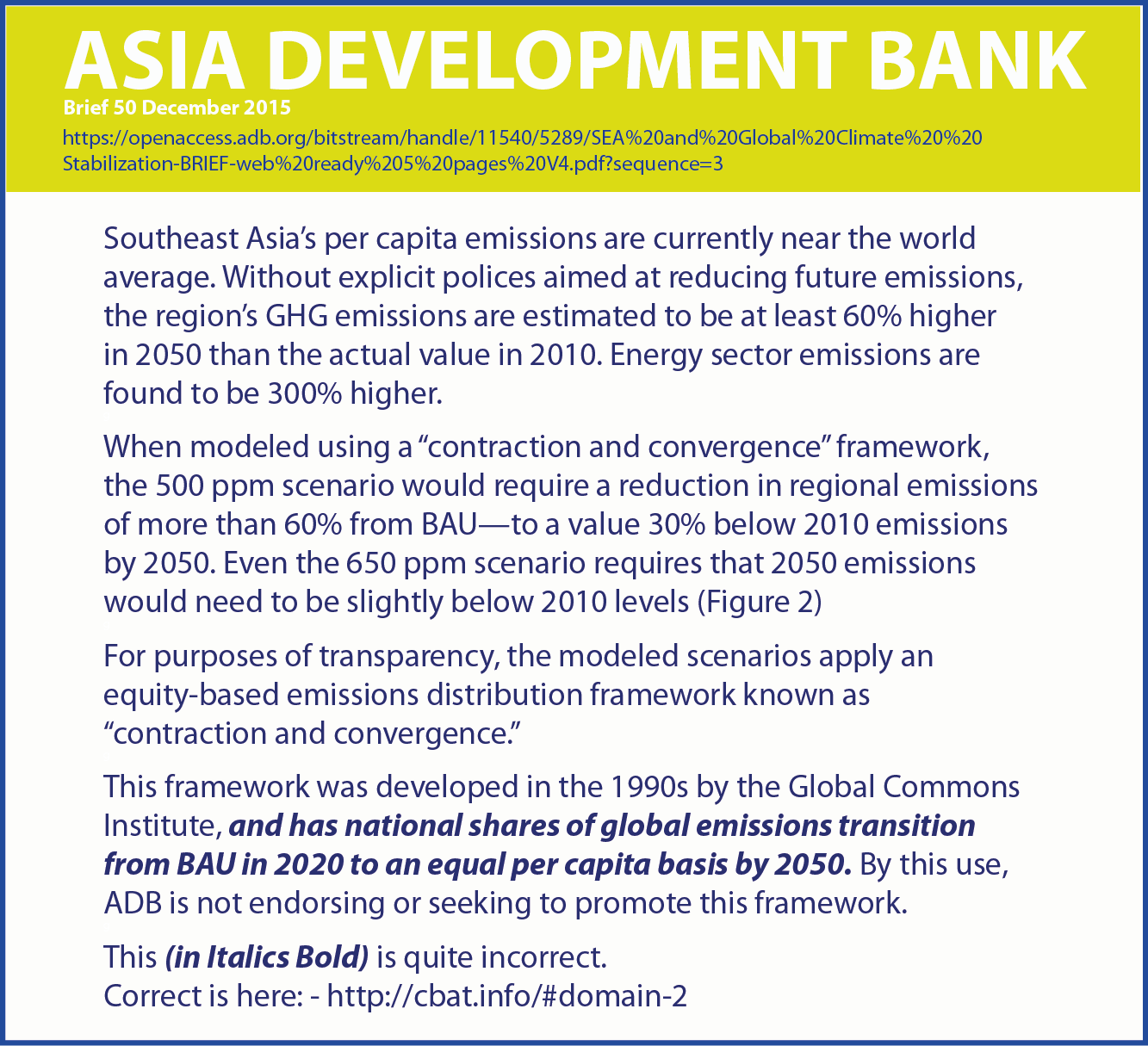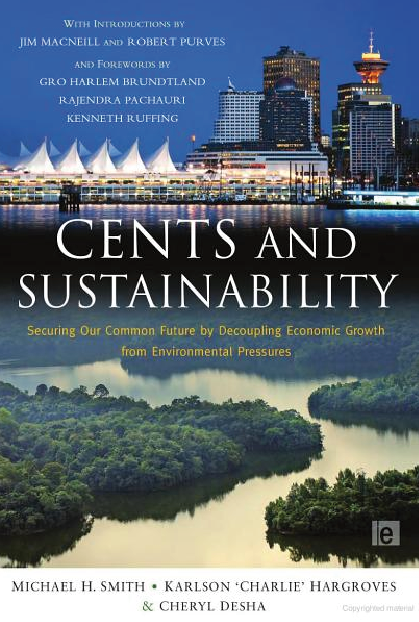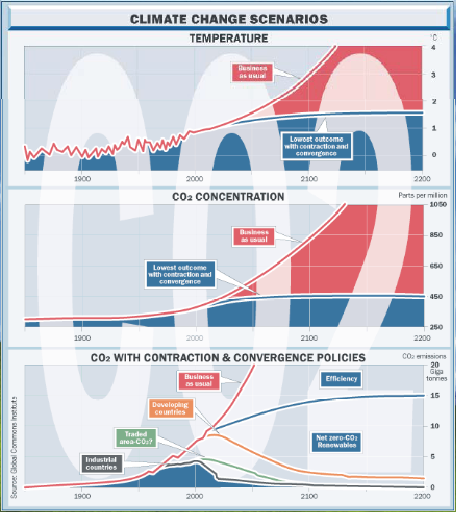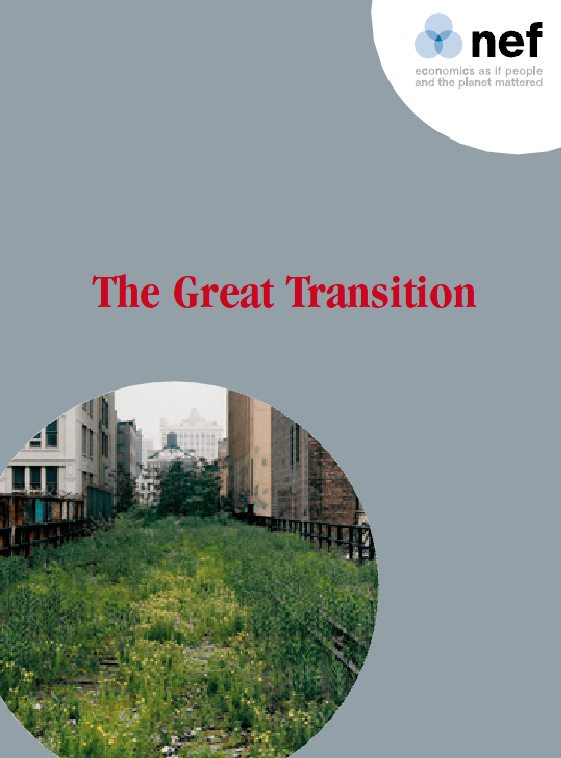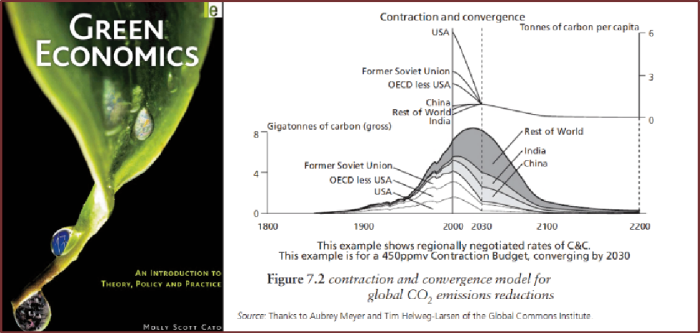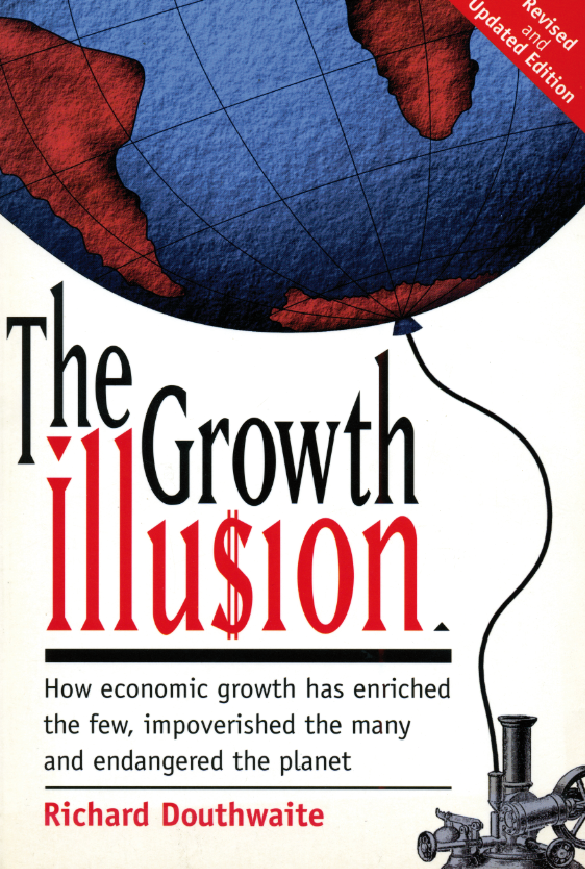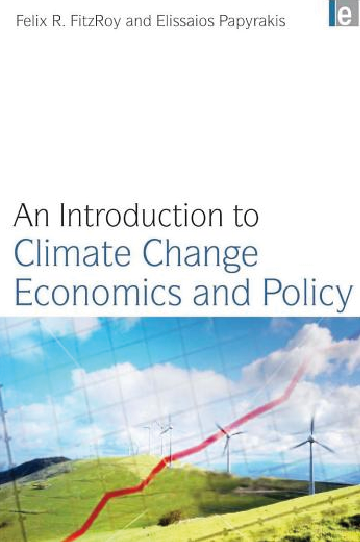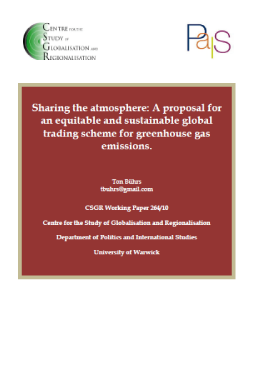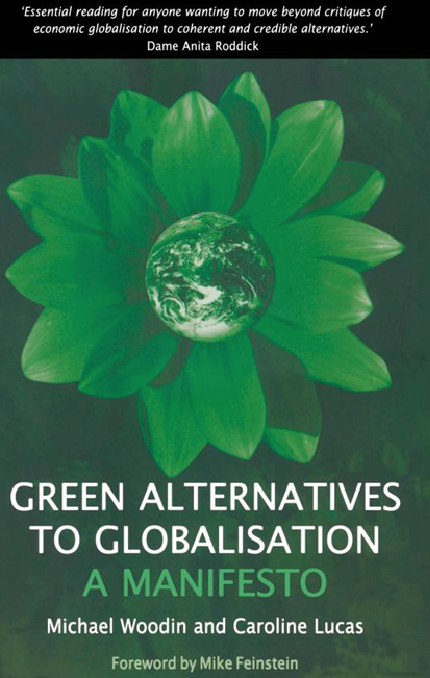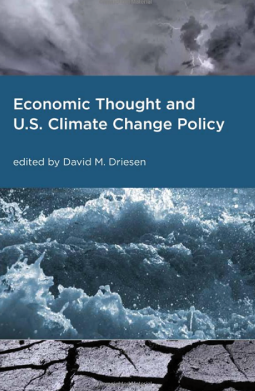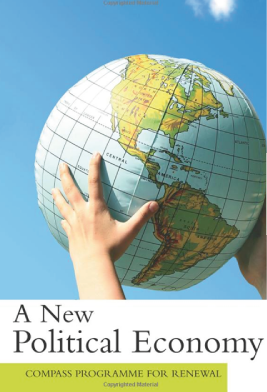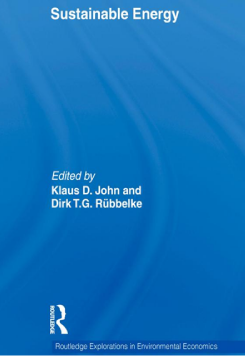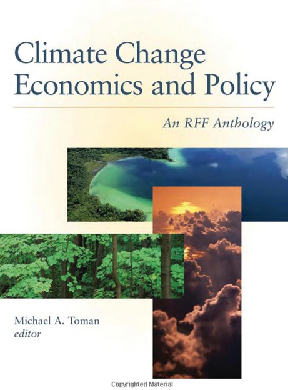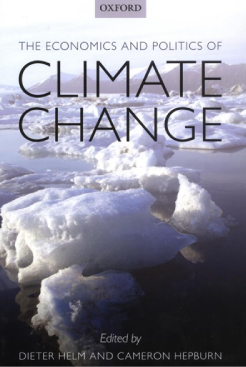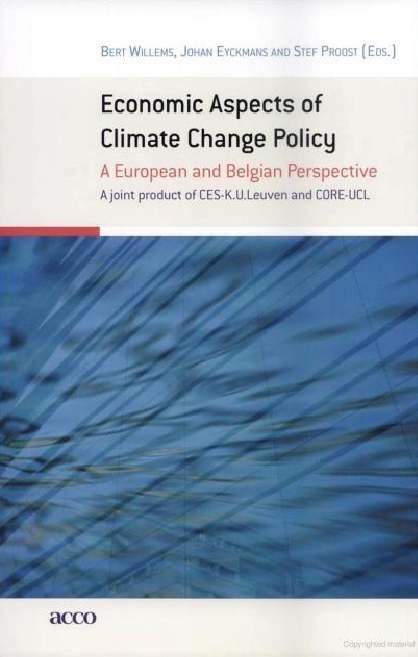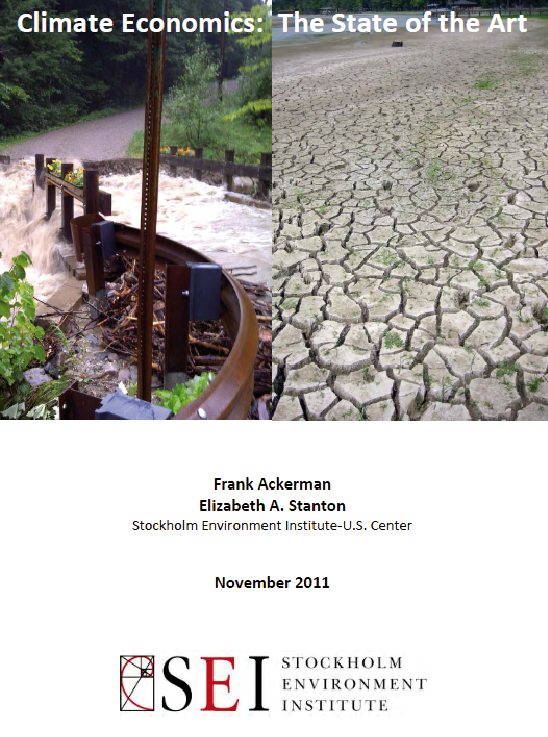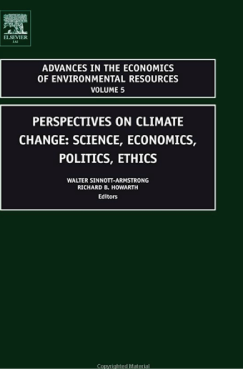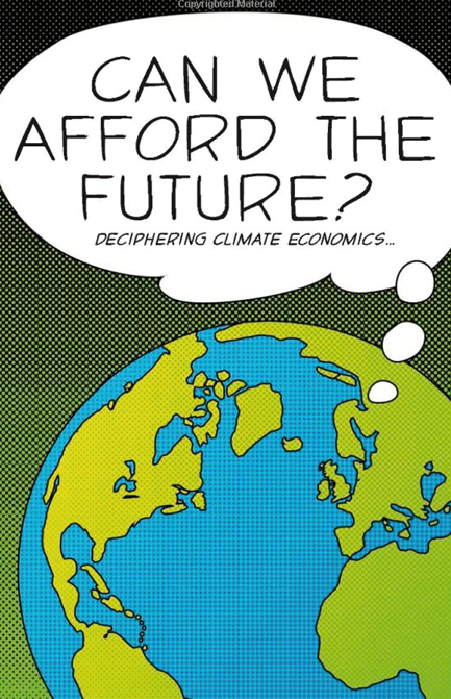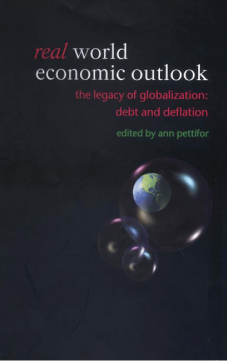More enlightened climate economics
Since 1996 when Contraction & Convergence (C&C) was introduced to the UNFCCC at COP-2
after 23 years C&C remains the most widely cited & supported proposal for UNFCCC-Compliance in play
The Global Commons Institute's famous proposal calls for a “Contraction and Convergence” (GCI, 2003) to a global mean of carbon emissions per capita far below a ton, which would be needed for atmospheric CO2 concentrations to stay within 450 ppm. However if an energy or carbon threshold for human needs can be estimated, there is no reason to believe it remains constant over time: our goal is to question the immutability of this relationship.
From constraint to sufficiency: The decoupling of energy and carbon from human needs, 1975–2005
Julia K. Steinberger, J. Timmons Roberts
Some proposals compensate the potential burden on developing nations with generous emissions allocation, whether as a simple strategy to obtain developing countries support for the regime or in a realisation of the global equity principle borrowed from social justice. A famous such proposal is Contraction and Convergence developed by Aubrey Meyer.
Act Locally Trade Globally - Emissions Trading for Climate Policy
Organisation for Economic Cooperation and Development OECD & IEA
"A precise version of the per capita approach, often referred to as ‘contraction and convergence’ (GCT 2000), has figured in the international debate for some time. It has been promoted by India and has been discussed favourably in Germany and the United Kingdom (German Advisory Council on Global Change 2003; UK Royal Commission on Environmental Pollution 2000). Recent reports have shown increasing support for variations on this general approach, see for example, Stern (2008) and the Commission on Growth and Development (2008).
The contraction and convergence approach addresses the central international equity issue simply and transparently. Slower convergence (a later date at which per capita emissions entitlements are equalised) favours emitters that are above the global per capita average at the starting point. Faster convergence gives more emissions rights to low per capita emitters. The convergence date is the main equity lever in such a scheme."Global Commons Institute 2000, ‘GCI C&C Briefing’, originally published as Meyer, A. 2000, Engineering Sustainability 157(4): 189–92.
Garnaut Review - C&C Chapter
Ross Garnaut now argues for a ‘modified contraction and convergence framework’
The contraction and convergence approach has figured in the international climate change debate since being developed by the Global Commons Institute in the United Kingdom during the 1990s. The approach has been promoted by India and discussed favourably in Germany and the United Kingdom. Reports by Nicholas Stern and the Commission on Growth and Development in 2008 supported variations on this general approach pointing to the need for all countries to aim for equal per capita emissions over the long term.
Garnuat Climate Change Review; Update 2011
Establishing ecological limits
The material profligacy of consumer society is depleting key natural resources and placing un-sustainable burdens on the planet’s ecosystems. Establishing clear resource and environmental limits and integrating these limits into both economic structure and social functioning is essential. This means paying a much closer attention to the ecological limits of economic activity. Identifying clear resource and emission caps and establishing reduction targets under those caps is vital for a green economy. To the extent that they have been implemented, the stabilization targets and emission budgets established for carbon provide an exemplar here (IPCC, 2007; CCC, 2010). The conditions of equity and ecological limits, taken together, suggest a key role for the model known as “contraction and convergence” in which equal per capita allowances are established under an ecological cap that converges towards a sustainable level (Meyer 2004). This approach has been applied, to some extent, for carbon. Similar caps should be established for the extraction of scarce non-renewable resources, for the emission of wastes (particularly toxic and hazardous wastes), for the drawing down of “fossil” groundwater sources and for the rate of harvesting of renewable resources. Effective mechanisms for achieving targets under these caps need to be set in place. Once established, these limits also need to be integrated into a convincing economic framework.
Societal transformations for a sustainable economy - Tim Jackson
Natural Resources Forum
The Garnaut Climate Change Review suggested an allocation of the global mitigation entitlements budget that was based on convergence towards equal per capita entitlements in 2050. The general approach of contraction and convergence (Global Commons Institute, 2000). The global emissions concentrations objective defines a global budget for emissions over a specified period. There needs to be an agreement on allocation of that budget amongst countries. Agreement has to be based on principles that are widely seen as being fair. Seen to be fair in rich and poor countries. Seen to be fair in rich countries which start with extremely high emissions per person, like Australia Canada and the United States, and in rich countries in which each person has far lower levels of emissions, like Europe, Japan and New Zealand. Seen to be fair in developing countries with rapidly growing economies like China, India and Indonesia, and in poor countries with stagnant or slowly growing economies as in many parts of Africa and the South Pacific. No proposal has any chance of being accepted as being fair through most of the developing world, and in my judgment in the world as a whole, unless it is based on the idea that each country’s entitlements to emit will converge on equal per capita levels at some time in the future. There will be widely different views of the time over which convergence should occur. There has been much international discussion of the Garnaut Review’s proposed basis for allocating entitlements.
Some commentators in developing countries, including China, have said that 2050 is too long to wait for convergence (Project Team of the Development Research Centre of the State Council 2009).
Seventh Annual Whitman Lecture delivered at the Peterson Institute
Washington, DC December 1, 2009
Contraction and convergence
Since the principle of ‘contraction and convergence’ was first proposed by the Global Commons Institute in 2000, it has been widely embraced by some industrialised countries. Under contraction and convergence, each country will start out with emission entitlements equal to its current real emissions levels, and then, over time, converge to equal its per capita entitlements, while the overall global budget contracts to accommodate the emissions reduction objective. The convergence principle should be applied immediately rather than later as the ‘converged point’ in the future. ‘Real emissions’ is a different concept to ‘emissions entitlement’. A country’s high/low per capita real emissions cannot justify its high/low emission entitlements. In the process of convergence, the rights and interests of country B are really infringed by country A. In the NEA-based solution, the concept of convergence can still be incorporated, but it now merely means ‘convergence of real emissions’ rather than ‘convergence of emission entitlements’. Each country’s gaps between its emission entitlements and real emissions need to be balanced by the traded emissions quotas.
Greenhouse Gase Emissions Reductions - A Theoretical Framework & Global Solution
Development Research Centre State Council People's Republic China 2009
I suggested a set of principles in the 2008 Review, and developed them in the Final Report in line with the structure of pledges in the Cancun agreements. In brief, developed countries would accept commitments to reduce emissions within a “contraction and convergence” framework. China would deliver on its commitment to reduce the emissions intensity of output 40 to 45 percent between 2005 and 2020. Other developing countries would accept emissions intensity targets that are as close as possible to the ambition of the Chinese targets. When a developing country’s emissions per capita reached the (falling) average levels of the developed countries, it would accept targets for absolute reductions within a contraction and convergence framework along the lines of the developed countries. The parameters of the commitments would be calibrated to achieve agreed climate objectives.
THE LIMITS TO ADAPTATION TO CLIMATE CHANGE
Ross Garnaut Vice-Chancellor’s Fellow and Professorial Fellow in Economics,
The University of Melbourne Keynote Address, Four Degrees or More?
Australia in a Hot World, Melbourne, 13th July 2011
Contraction and Convergence Climate Policy that is effective and fair.
Jarbuch Okologishche Okonomik
John Rawls’s liberalism is the dominant political philosophy of our time. But is it compatible with the values of green economics? I argue in this paper that it is founded on ungreen economics. In particular, Rawls’s ‘difference principle’, which takes inequalities to be just if they benefit the worst off, is subjected here to three counter-arguments. Firstly, an argument based on one from Norman Daniels. Secondly, an argument based on one from Jerry Cohen. Thirdly, and most originally: inegalitarian modes of ‘societal’ organisation are ecologically unsustainable. The difference principle unconsciously assumes that the Earth is infinite, that the more we raise the lowest boats the better; disregarding that we may already have raised the lowest boats – in Western societies at least – let alone, obviously, the higher boats, more than the ecosphere can tolerate. Rather than envying the rich, or building up the assets or income of the poor, the necessary thing to do is primarily simply to build down the rich to a level where their (i.e., our) lifestyle actually is sustainable, which is argued for in the contraction and convergence model
“Beyond an ungreen-economics-based political philosophy”
Dr Rupert Read - International Journal of Green Economics
"Contraction and Convergence (C&C) refers to an approach originally proposed by the Global Commons Institute (GCI) but now widely agreed to represent a fair and meaningful way of achieving stabilization targets. Overall emissions 'contract’ to a level compatible with the stabilization target, and per capita emissions 'converge' towards an equal per capita shares of the overall emissions budget. Very simply, C&C is a way of transparently structuring future negotiations on the understanding that prosperity is governed by ecological limits on the one hand and fair shares on the other." For more information on the approach see for example Meyer 2004, See also briefings by the Global Commons Institute, online here and here
Prosperity Without Growth: Economics for a Finite Planet
Tim Jackson
Recommendations for establishing resource limits and integrating them into economic institutions
- Identify clear resource and emission caps, and establish reduction targets under those caps. Apply the model of “contraction and convergence” in which equal per capita allowances are established under an ecological cap that converges toward a sustainable level.
- Reform tax codes for sustainability. Internalize the external costs of economic activities by shifting the burden of taxation from economic goods (e.g., incomes) to ecological bads (e.g., pollution). Offset new taxes on resource use or carbon with reductions in taxes on labor.
- Support ecological transitions in developing nations. Create robust funding mechanisms (akin to the Global Environment Facility) to make resources available for investment in renewable energy, resource efficiency, low-carbon infrastructures, and the protection of habitats and biodiversity.
Centre for the Advancement of the Steady State Economy
"The Global Commons Institute has devised a greenhouse gas abatement proposal called “Contraction and Convergence” (Global Commons Institute 1997) in which the emphasis is placed not only on a significant contraction of anthropogenic CO2 emissions, but also on an equitable per capita distribution of the resulting global carbon budget. The latter implies a transition to a point (convergence) where future entitlements to emit will have become proportional to population. The uniform per capita allocation of emission rights reflects egalitarianism in the sense that all people have inherently an equal right to pollute. The egalitarian criterion per se has a strong philosophical appeal. However – under contraction of the global carbon budget – it is unlikely to be acceptable for industrialized countries with currently high per capita emissions unless the transition path allows for long-term “smooth” adjustment towards the terminal point. Equity considerations are not only ethically founded; they also conform to the idea that equity might “serve a positive role as a unifying principle that facilitates an international greenhouse warming agreement” (Rose and Stevens, 1996 p.1)."
ZEW discussion paper No. 99-13 - C&C - Contraction & Convergence of Carbon Emissions:
The Economic Implications of Permit Trading
Christoph Böhringer and Heinz Welsch
"The notions of the right to climate protection or climate security of future generations and of shared responsibilities in a common world can be combined to assert that, collectively, we have the right only to emit some very small amount of GHGs, equal for all, and that no-one has the right to emit beyond that level without incurring the duty to compensate. We are therefore obliged to pay for the right to emit above that common level. This can be seen as one argument in favour of the ‘contract and converge’ proposition, whereby ‘large emitters’ should contract emissions and all individuals in the world should either converge to a common (low) level or pay for the excess (those below that level could sell rights)."
Source: Contraction and Convergence ™ (C&C) is the science-based, global climate policy framework proposed to the UN since 1990 by the Global Commons Institute (GCI)
The Economics of Climate Change
Nicholas Stern on C&C
5. The lifecycle of the sustainable development paradigm: a fading adage?
In the social arena, the campaigners for de-growth tend to actively shy away from the notion of sustainable development a la Brundtlànd report, and even more in its ecological modernization interpretation endorsed by ‘green companies’, viewing it as a false and unfeasible project that delays the urgent changes needed, as for instance in the case of global climate change.
There are a number of reasons for the weakening of the appeal of the concept of sustainable development that has largely dominated ecological economics and wider environmental and social discourses over the past two decades (Zaccaï, 2002; Hopwood et al., 2005; Vivien, 2008). This weakening no doubt contributes to the success of flourishing works and initiatives under the banner of de-growth. This section looks at the future of de-growth as a potential emergent paradigm appealing to many sectors of society in lieu of the concept of sustainable development.
Although some progress may be detected for particular objectives arising from the sustainable development paradigm, the general picture with regard to environmental pressure, even when depicted by official agencies, continues to look bleak at global and even regional levels (OECD, 2008; EEA, 2009). The final words of the summary of the Millennium Ecosystem Assessment (MA, 2005) make explicit that the changes that could reverse the increasing damages to ecosystems and
biodiversity are not under way. The international official objectives of halting biodiversity loss in 2010 are not being achieved in Europe and elsewhere. Regarding the issue of global climate change the latest findings indicate, report after report, towards more severe and bleaker assessments if the current weak policies for tackling the problem are not modified.Lack of agreement on GHG emission reductions at Copenhagen in December 2009 is in stark contrast to the main objectives suggested by the IPCC, such as peaking global CO2 emissions within the next years and decreasing them by 80% by 2050 in rich countries. Actual known trends in energy consumption signal that the world is moving in another direction. At the emission rates of 2007, leading to an increase of approximately 2 extra ppm per year, the concentration of CO2 at 450 ppm in the atmosphere might be reached within 30 years. These are inescapable uncomfortable facts (Walker and King, 2008).
These flagrant shortcomings cast a profound doubt on the achievement, within current policies of the double convergence path promoted by sustainable development: convergence between ecological, social and economic dimensions of development and (contraction and) convergence between the impacts of Northern and Southern countries in order to be more environmentally sound and economically just.
Sustainable de-growth:
Mapping the context, criticisms and future prospects of an emergent paradigm
Joan Martínez-Alier a, Unai Pascual b, Franck-Dominique Vivien c, Edwin Zaccai
Contraction and Convergence [C&C]. This plan combines equal rights to emit with grandfathering [or assigning rights based on past emissions, the higher the past emissions, the larger the grandfathered emissions rights]. Each country is allocated emissions right based on its past emissions. Countries that exceed desired per capita global emissions have their allocation reduced in each succeeding year, while countries that emit less that this target receive a higher allocation each year. Over time global emissions contract while high an low emitting countries converge on the same per capita emissions [Global Commons Institute].
World Economic and Social Survey 2009 Promoting Development Saving the Planet
UN Department of Economic and Social Affairs
One cannot say anything about the extent to which future policy may shift climate change from this course on the basis of fulfilment of pledges on emissions reductions to 2020 within the Cancun agreements, unless one has a set of principles within which one can relate pre-2020 to post-2020 commitments. I suggested a set of principles in the 2008 Review, and developed them in the Final Report in line with the structure of pledges in the Cancun agreements. In brief, developed countries would accept commitments to reduce emissions within a “contraction and convergence” framework. China would deliver on its commitment to reduce the emissions intensity of output 40 t0 45 percent between 2005 and 2020. Other developing countries would accept emissions intensity targets that are as close as possible to the ambition of the Chinese targets. When a developing country’s emissions per capita reached the (falling) average levels of the developed countries, it would accept targets for absolute reductions within a contraction and convergence framework along the lines of the developed countries. The parameters of the commitments would be calibrated to achieve agreed climate objectives.
4 Degrees or More? 2011 Conference Australia in a Hot World, Melbourne, 13 07 2011
Professor Ross Garnaut The University of Melbourne
Contraction and convergence
The contraction-and-convergence approach assigns every human being an equal entitlement to greenhouse gas emissions. All countries would thus move toward the same per capita emissions. Total emissions would contract over time, and per capita emissions would converge on a single figure. The actual convergence value, the path toward convergence, and the time when it is to be reached would all be negotiable. [Meyer].
World Bank Development Report 2010
Development and Climate Change
Along with Human Well-Being and Economic Decision-Making, we have to ask about “green taxes” that will check environmental irresponsibility and build up resources to address the ecological crises that menace us. The Contraction and Convergence proposals are among the best known and most structurally simple of these, and it would be a major step to hear some endorsement of them from a body such as this.
Faith and the Global Agenda: Values for the Post-Crisis Economy
World Economic Forum, DAVOS, Switzerland 2010
The Global Commons Institute has devised a greenhouse gas abatement proposal called Contraction and Convergence (Global Commons Institute 1997), in which the emphasis is placed not only on a significant contraction of anthropogenic CO2 emissions, but also on an equitable per capita distribution of the resulting global carbon budget. The latter implies a transition to a point (convergence) where future entitlements to emit will have become proportional to population. The uniform per capita allocation of emission rights reflects egalitarianism in the sense that all people have inherently an equal right to pollute. The egalitarian criterion per se has a strong philosophical appeal. However – under contraction of
the global carbon budget – it is unlikely to be acceptable for industrialized countries with currently high per capita emissions unless the transition path allows for long-term “smooth” adjustment towards the terminal point.
Contraction and Coonvergence of Carbon Emissions: An Interntemporal Multi-Region CGE Analysis. Journal of Policy Modeling: The Fiscal Implications of Climate Change International Monetary Fund
A deal for UNFCCC-compliance is really needed at COP-17 Durban, December 2011. It is yet achievable with C&C. *The Issue remaining* is simply now getting governments to agree the same rate of convergence. At COP-15 the Annex One countries prescribed 2050 as the convergence year. Before COP-15 the Chinese Government prescribed 2010 as the convergence year. The solution is obvious - you're nearly there; negotiate to the middle of this - References for the above are here with detail here - Support for C&C is now vast and diverse and discussing ways to make what is achievable actually happen is very desirable now.
Long Finance
"The Kyoto Protocol, completed in the early hours of December 11th 1997, at present is no more than a potential breakthrough in the development of effective global policy for the control of atmospheric concentrations of greenhouse gases and the mitigation of human-induced global climate changes. The core issue of the negotiations has been deferred until COP4 in November 1998. The industrial countries have negotiated a compromise that subject to ratification will legally bind them to commitments beyond those in the UNFCCC. But, the ratification of the Protocol by the US still remains contingent on achieving the “meaningful participation” of “key” developing countries in the abatement regime and the multilateral acceptance of international emissions trading. This is a struggle to define property rights. These key developing countries include India and China and they have made it clear that their acceptance of trading is contingent on the achievement of “equitable allocations” of emissions entitlements based on achieving equal per capita entitlements globally.COP issued instructions to the technical bodies attached to the UNFCCC to “define the relevant principles, modalities, rules and guidelines for emissions trading” in time for COP4 in November 1998 in Buenos Aires. GCI argues that "Contraction and Convergence" is the approach that can break through this deadlock and welcomes the fact that major parties and interest groups in this dispute have already acknowledged that they take this approach seriously and that it has growing support throughout the world. As a leading economics commentator Peter Jay has noted, “… unless there is some recognition that eventually no one group of human being can expect to have an internationally recognised right to consume more of the world's limited capacity to absorb greenhouse gas emissions than any other group, it is hard to see how a globally enforceable policy can be built by consent.” And in the words of the President of GLOBE International "Contraction and Convergence is not simply the right way to solve the problem, it is the only way to solve the problem.”
The Kyoto Protocol and the Emergence of “Contraction & Convergence” as a framework for an international political solution to greenhouse gas emissions abatement. A Meyer 1997
Some proposals compensate the potential burden on developing nations with generous emissions allocation, whether as a simple strategy to obtain developing countries support for the regime or in a realisation of the global equity principle borrowed from social justice. A famous such proposal is “Contraction and Convergence” developed by Aubrey Meyer.
Act Locally Trade Globally - Emissions Trading for Climate Policy
Organisation for Economic Cooperation and Development OECD & IEA
"High Level Dialogue on Climate Change"
Asian Development Bank on C&C
“The framework of contraction and convergence provides a flexible methodology to address the problem of allocation of emission rights. The contraction of overall world emissions pursued along with the convergence of countries’ average per capita emissions, allows developing countries to partake of the carbon budget. The per capita entitlements approach is an effective one in that it takes into account historical responsibility and is based on the egalitarian distribution of the commons, within which international justice positions of causal responsibility such as the ‘polluter pays principle,’ come in."
Ursula Schäefer-Preuss
Vice President of ADB.
Haruhiko Kuroda
President and Chair ADB Board.
Ban Ki-moon
Secretary General of the United Nations.
Rajendra Pachauri
Director of TERI, Chair IPCC.
Yvo de Boer
Former Executive Secretary UNFCCC.
Gloria Macapagal Arroyo
President Philippines.
Zhou Dadi
Chief advisor national energy strategy, People’s Republic of China.
Full Signatory ListWe are living in a world that the CIA coined VUCA – times of volatility, uncertainty, complexity and ambiguity. If one looks at the nature of the recent commodity price crisis (2007), financial crisis (2008), economic recession (2009), public debt crisis and oil spill disaster in the Gulf of Mexico (2010) one can arguably identify a “transgression problem” (Pascal Lamy) at their root. Humanity is transgressing thresholds at two levels:
- Humanity is transgressing reasonable limits of debt - The recent recession was to a large degree caused by the collapse of an asset bubble that inflated financial values well beyond the true value of underlying economic resources just for the sake of stimulating demand. Once the asset price bubbles burst and increased public borrowing was needed to protect the banks and to fund economic recovery, public sector debt and gross external debt rose sharply. According to IMF calculations the total cost of the financial crisis will amount to the astronomic figure of $12 trillion or 20% of annual world output.
- Humanity is transgressing “planetary boundaries” - Under the weight of both the growing size and the intensifying activity of humanity, human impact is no longer only at local levels. Global natural systems are being affected. Climate is the most visible system that is being destabilized, but others are equally critical (oceans, fresh water, biological diversity etc.). Earth systems scientists are working on nine planetary boundaries where dangerous tipping points into less favorable conditions for human survival are highly likely.
These phenomena are similar in nature and have impacts that go far beyond the financial and ecological systems: When assessing the progress that has been made on the Millennium Development Goals, Secretary General of the United Nations, Ban Ki Moon, had to admit in June that improvements in the lives of the poor have been unacceptably slow, regionally uneven and that some hard-won gains are being eroded again by the climate, food and economic crises. In fact all phenomena are related to governance failures:
- Failure of governance to limit debt levels in relation to GDP;
- Failure of governance to acknowledge planetary boundaries and to decouple GDP from energy and resources;
- Failure of governance to meet globally accepted targets in redistributing GDP for the benefit of the most vulnerable persons in the world.
This development path is unsustainable and prone to destabilization and conflict, passing on to future generations vast and perhaps crippling financial, ecological and social debts. What is needed is a higher degree of systemic resilience. Therefore, governance agendas should be transformed from single issue-objectives to multiple, integrated social-ecological ones:
- As to the finance system governance should aim at higher levels of bank capital and liquidity and at taking precautionary measures to prevent risks without endangering sustainable growth. As to national budgets the task is to reduce the increasing levels of public debt.
- Concerning planetary boundaries the time is ripe for identifying scientifically endorsed resource and emission caps, and for establishing reduction targets associated with these caps - “Contraction and convergence” strategies. There is also a strong case for getting prices right in order to properly account for energy and material flows.
- As to global poverty governance needs to reinforce the MDGs and Rio Process and deliver tangible results.
In a way one of the key challenges for economic governance is to devise broader measures of well-being to assess the right things along the triple bottom line of people, planet and growth in the right way, so that policy makers know towards what they should steer and what progress they are making in that direction. “What gets measured gets done.” This is a task that has begun with the Istanbul declaration of the OECD world forum in 2007. To monitor the state of an economy, there should be an accepted set of performance indicators to help diagnose the state of the system. Today one single indicator prevails – GDP growth. Growth is essential. But the question is – what kind of growth. To tackle this question involves a twin effort in governance: To complement GDP growth as the principal indicator of economic development with other indicators of ecological and social progress and to refine GDP so that is covers much more than material growth. Today this is no longer an academic exercise. It is key for a governance system that is responsibly addressing the integrated social-ecological challenges and adequate to the volatility, uncertainty, complexity and ambiguity of our times.
Sustainability and Global Governance
Wolfgang SchüsselThe GES Advisory Board provides advice on the development of the GES, may suggest themes and special events at the GES, helps attracting high-ranking participants, and may propose new Advisory Board members. Its members benefit from a privileged access to the GES’s business, political, civic, and academic communities, and to state-of-the-art economic research on global affairs.
Full listed GES Advisory Board
The Australian economist Ross Garnaut showed the need to country-specific trajectory curves based on Contraction and Convergence as illustrated. As his report pointed out, “Broad international agreement will require acceptance of global limits on emissions, sharing of rights to emissions across countries within these limits.”
Cents and Sustainability
Michael H. Smith, Karlson Hargroves, Cheryl Desha
Consider the ambitious target for reducing carbon emissions suggested two years ago by Britain’s Royal Commission on Environmental Pollution. Its proposal was to reduce emissions by 60 per cent by 2050, possibly through an international agreement called Contraction and Convergence, which has been much discussed in Johannesburg. This would give every country a quota for carbon emissions, based on its population and would allow countries to trade these emission rights. This would gradually reduce worldwide carbon emission and encourage the development of more efficient technologies. In the meantime, it would ensure a flow of funds from rich countries to poor ones, which, because of their lower levels of car ownership and industrialisation, would have surplus emission rights.
Capitalism is the best way to save the planet
Anatole Kaletsky in the Times
"We assume a global ‘deal’ based on ‘contraction and convergence’ to limit, reduce and maintain total global emissions within defined limits (the contraction); we also assume that the UK’s total share of emissions progressively comes into line with its fair global share (the ‘convergence’), with significant transfer payments to developing countries during the process to facilitate their sustainable development."
The Great Transition NEF Recommendation: -
"Government must agree a global fair deal on climate change with appropriate contraction and convergence targets to avert dangerous climate change, reflecting the UK’s ‘fair share’ of total sustainable carbon emissions."
The Great Transition New Economics Foundation - 2010
Since enforcing a carbon cap via tradeable permits effectively creates a huge economic value, it should belong to all citizens rather than a small minority. Such a commitment to equity leads to a plan for the sharing of the global commons, such as the Global Commons Institute’s Contraction and Convergence the first approach to tackling climate change that began fromthe simple notion that each person on the planet had an equal right to produce CO2. The ‘convergence’ was the name given to the commitment to share these emissions fairly within a meaningful cap on total output of CO2. Overproducing countries would then be required to compensate underproducing countries. The ‘contraction’ is the process of all countries, in step, reducingtheir emissions gradually over the next 50 years. The scheme is illustrated in Figure 7.2. The rising curve is the historical increase in CO2 emissions; these are portrayed following a sharp descent over the next century (the contraction) during which time countries also converge towards a share of the global total that represents the size of their population.
Green Economics
Molly Scott Cato
But can costs and benefits ever be calculated on a value-free basis? Can one put an objective cash figure on the value of the human lives that will be lost as a result of the increased storm damage warming will cause, or on the extra deaths from disease? Is there a value-free monetary figure for the worth of the species that will become extinct and the coastal plains and islands that will be submerged by rising seas, particularly given the extreme amount of uncertainty about what will actually happen? Most ordinary people would say it was not possible to put a cash value on such things, but the Pearce team had lost the facility to think like ordinary people. The team members didn't see a problem because there was a standard CBA technique, willingness-to-pay, which they could use to prepare their valuations. As far as they were concerned, the benefit of stopping global warming circa 2050 was the total amount that those likely to be hurt by it in that year seemed likely to be prepared to pay to stop it happening. Naturally, as poor people in poor countries can't offer to pay very much to save themselves, the team valued deaths and damage affecting them at much less than deaths and damage in wealthier parts of the world. This grossly distorted the international distribution of the cost of warming in their chapter which, when it was published in draft in 1994, purported to show that the industrialized countries, the ones causing the damage by their heavy fossil fuel use, would suffer twice as much from warming as the rest of the world put together. This was despite the fact that 85 per cent of all the low lying land lost as a result of rising sea levels would be in non-industrialized countries, as would three quarters of the reductions in fresh water supplies, and 78 per cent of the extra deaths.Aubrey Meyer was outraged when he saw that the team had valued a life saved in China or India at $100,000, a fifteenth of the value of lives saved in Europe or North America, and he began circulating a letter to eminent people all over the world, protesting what he called "the economics of genocide." His "silly campaign of misinformation and abuse," as Pearce later described it, collected five hundred signatures in support, some from authors working on other chapters of the IPCC's Assessment. This meant that when the IPCC tried to get national delegations to approve the Assessment as a whole at a meeting in Geneva in June 1995, there was so much unease about the Pearce chapter that the chairman, James Bruce of Canada, sent the Policymakers' Summary, the only part of the report over which the IPCC had control (tbe contents of the chapters were the responsibility of the writing teams alone), to a private, governments-only committee for consideration. The committee's recommended re-wording of the Summary, with the disputed valuations still intact, came back to the full meeting only ten minutes before it was due to end. A vote was taken to approve the entire Assessment as a package, and Bruce quickly gavelled the meeting closed, ignoring the Cubans who had been waiting to speak. When this was pointed out, Bruce was obliged to re-open the meeting. The Cubans then rejected the amended wording outright because GCI's arguments had not been answered. At this point, Brazil backed the Cubans with a formal protest, and Bruce had no option but to call a special meeting in Montreal in September 1995 to settle the issue.
Several unsuccessful attempts were made to get the Pearce team to modifY its draft chapter in the three months between the Geneva and Montreal meetings. "We won't be revising it," the New Scientist quoted Pearce as saying.' "This is a matter of scientific correctness versus political correctness." Similarly, when the British Government's chief adviser on sustainability, Sir Crispin Tickell, the former diplomat who had aroused Margaret Thatcher's interest in environmental issues, wrote a friendly letter to Pearce in which he referred to the value of a statistical life and the willingness-to-pay method as "economists' artefacts," an illtempered reply came back saying Sir Crispin was "wrong on every point." Tickell later described the valuations as "ludicrous" and wrote to the IPCC to protest. When further pressure on the Pearce team failed in Montreal, the IPCC had the choice of dumping its chapter entirely or leaving its figures out of the Policymakers' Summary. In the event, the chapter was retained but the Summary effectively disowned it by stating in the course of a detailed critique that "the value of life has meaning beyond monetary value."
The Growth Illusion
Richard Douthwaite
For reasons of equity, there is much support for a 'contraction and convergence' scheme, which would provide allowances for carbon emissions to all countries in proportion to their population. This also requires agreement among the main emitters that global emissions shuold be capped, by issuing a total number of permits which represents less than current global emissions. Thc cap should then decresse over time (so that we can ideally reduce our global emissions by 80-90 percent by 2050 or earlier. Developed countries would receive fewer permits than their current emissions, and would thus have to buy excess allowances from poor states that emit less than their allocated permits. This would generate a flow of aid from rich to poor countries, declining inequality and convergence of per capita income levels, though without any implication that actual equality would be reached in the foreseeable future
An Introduction to Climate Change Economics and Policy
Felix FitzRoy, Elissaios Papyrakis
"Contraction and convergence: - The long-term trend in the climate regime will probably reflect the principle that greenhouse gas emissions should converge to a common per capita level. Achieving this target would involve two steps: (i) an emissions quota is specified in accordance with an agreed level of long-term reductions in greenhouse gases in the atmosphere (contraction); (ii) emission quotas are distributed among countries in such a way that per capita emission converge by an agreed date (convergence)."
Renewable energy sources in Latin America and the Caribbean:
two years after the Bonn Conference
Coordinated by Manlio F. Coviello
Economic Commission for Latin America and the Caribbean (ECLAC)
The ‘Contraction and Convergence’ (C&C) approach, which also assigns, in principle, an equal per capita ‘right’ to GHG emissions to all people, and expects emissions of all countries to converge to that level by a set date, can be seen as an application of the ES approach. (Kuntsi-Reunanen and Luukkanen, 2006; Meyer, 2000; Najam, et al., 2003; Pearce, 2003). Although initially dismissed as idealistic, there are signs that its political acceptability is growing, in part because there seems to be no other way to bring countries like China and India into the fold of a global climate change regime. Many political and business leaders, including the German Chancellor Angela Merkel, have expressed support for the adoption of a global agreement based on the Contraction and Convergence model, recognising that, in global political terms, it is the most realistic basis for forging international consensus on a post-Kyoto climate change agreement (Global Commons Institute, 2008; Spiegel Online International, 2007).
Sharing the Atmosphere
A Proposal for an equitable and sustainable global trading schme for GHG emissions
Ton Buhrs University of Warwick
"Contraction and convergence" - "Given the obvious shortcomings of an immediate "equal per capita allocation of emission rights that would be compatible with scenarios leading to stabilising GHG concentrations at low levels, their proponents usually see it as a longer-term objective (Meyer, 2000). Allocation for near-term targets would thus be an interpolation between current emission levels and a longer-term equal per capita allocation."
OECD "Beyond Kyoto" Energy Dynamics and Climate Stabilization
A robust emissions-trading scheme should be introduced as part of a new iunternation treaty to cut greenhouse gas emissions, based on the contraction and convergence (C&C) model. Under the C&C model each country would be allocated the same per capita allowance for greenhouse gas emissions.
Green Alternatives to Globalisation: A Manifesto
Michael Woodin, Caroline Lucas
"Contraction and Convergence. The Global Commons Institute has suggested setting a deadline of either 2020 or 2050 for reaching an equal shares allotment. See GCI briefing www.gci.org.uk"
Economic Thought and U.S. Climate Change Policy
David M. Driesen
"Contraction and Convergence seems a long way off the agenda at present, but such a programme seems the only likely lon-term way to secure an acceptable level of emissions at the global level."
A New Political Economy: Compass Programme for Renewal
Hetan Shah Martin McIvor
A fairer system would be based on per capita emissions such as the “Contraction and Convergence” model championed by the Global Commons Institute.
People-First Economics
David Ransom
Different visions of the energy system and how the low carbon transition is employed.
“Contraction and Convergence” - Global Commons Institute.
Sustainable Energy (Routledge Explorations in Environmental Economics)
Klaus D. John, Dirk Rübbelke
The idea of making per capita emissions the basis for equitable burden sharing Is a much·dlscussed option that Is favored by many developing countries. Such formulas are often referred to as convergence measures. A dynamic example of this approach from the Global Commons Institute is Contraction and Convergence [see suggested reading]. Under this option over time developed countries wound reduce emissions in proportion to their population and developing countries would increase emissions according to their population. Eventually, developed and developing coutries would converge to the same per capita emissions ratio. For the environmental goals of the UNFCCC to be met, the ratio and length of expected of time until convergence would have to be calculated to ensure the necessary amount of GHG emissions reductions.
Climate Change Economics and Policy:
An RFF Anthology Professor Michael A. Toman
Somewhat more realistically, ‘Contraction and Convergence’ scheme proposes national emissions quotas would start from current levels and very slowly converge - over several decades - to being proportional to population.
The Economics and Politics of Climate Change [Hardcover]
Dieter Helm (Editor), Cameron Hepburn
Not private credit needs of corporations and hedge funds, the Contraction and Convergence dimension would impose monetary limits and lead to the contraction of the total of greenhouse gas emissions.
International Political Economy
Raymond Miller
‘Contraction and Convergence’ proposal of the Global Commons Institute [1996] all coutries have to agree a safe level of GHGs for instance no more than 450 ppmv by 2100
Rules for the Global Economy
Gary Hufbauer
Per Capita Convergence - derived from the Global Commons Institute (GCI) Contraction and Convergence proposal - in which the target is to converge to an equal per capita emission at a certain period in the future, here 2050
Economic Aspects of Climate Change Policy
Bert Willems Johann Eyckmans Stef Proost
A well-known proposal is “Contraction and Convergence,” which creates a transition toward equal per capita rights. The global target for per capita emissions shrinks steadily toward a sustainable level. Countries with per capita emissions above the global target have their emissions allocation reduced over time; countries below the global target receive gradual increases in their allocations. Using this strategy, global emissions would contract while per capita emissions among countries would converge (Global Commons Institute 2010).
Climate Economics: The State of the Art
Frank Ackerman Elizabeth A. Stanton Stockholm Environment Institute-U.S. Center
The Contraction and Convergence framework is useful for reconciling the divergent interests and views of nations on the basis of their diverse per capita emissions profiles.
Perspectives on Climate Change: Science, Economics, Politics, Ethics (Advances in the Economics of Environmental Resources) Walter Sinnott-Armstrong, Richard B. Howarth
One widely discussed idea is contraction and convergence (C&C).
Can We Afford the Future?:
The Economics of a Warming World (The New Economics): Deciphering Climate Economics
Frank Ackerman
"We need a system of Contraction and Convergence as promoted by the London-based GCI."
The Real World Economic Outlook New Economic Foundation~~~~~~~~~~~~~~~~~~~~~~~~~~~~~~~~~~~~~~~~~~~~~~~~~~
"Contraction and Convergence is a prime example of a UNFCCC-compliant Global Climate Change Framework. It is a rational formulation for reconciliation of 'Climate Justice without Vengeance'. Several ideas derived from C&C have surfaced since Kyoto with ideas that can be perhaps in various ways incorporated into C&C. However, there is an overwhelming need for an over-arching UNFCCC-compliant Framework that enables the globally competing interests of the over-consuming and the under-consuming to be reconciled with each other and with the objective of the UNFCCC in a non-random manner. We feel that C&C is the veteran and indeed the apex example of this and urge you to consider our request. At Kyoto in December 1997 and shortly before they withdrew from these negotiations, the USA stated, “C&C contains elements for the next agreement that we may ultimately all seek to engage in.” The adversarial reasons for their withdrawal then were in play again at COP-15: - http://www.gci.org.uk/public/COP_15_C&C.swf C&C answers this in a unifying and constitutional way and the need for this answer becomes increasingly critical."
Letter and 250 other signatories at: - http://www.gci.org.uk/politics.htmlProfessor Tim Jackson
Sustainable Development Surrey University
Robert Constanza
Gordon and Lulie Gund Professor of Ecological Economics
Director, Gund Institute for Ecological Economics
.
